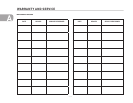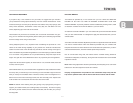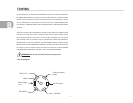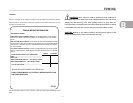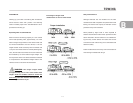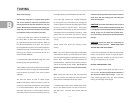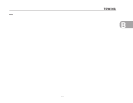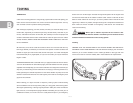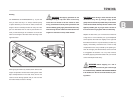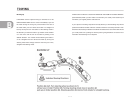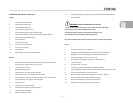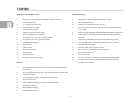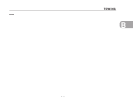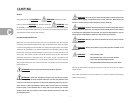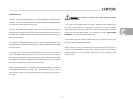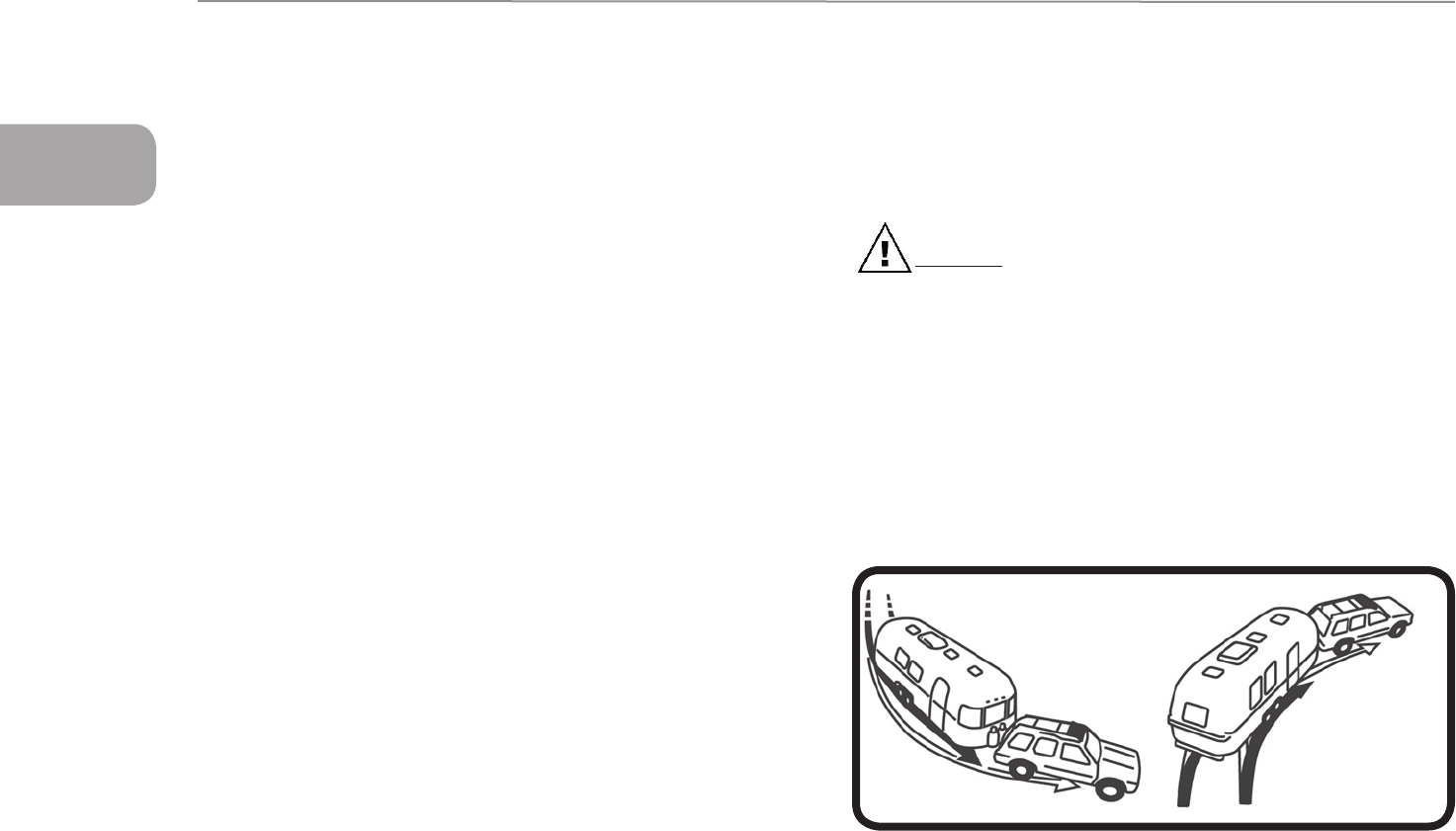
B
TOWING
B - 8
TOWING TIPS
A few hours of towing practice in a large empty supermarket lot will make pulling your
trailer over the road much easier. Line out two corners for left and right turns. You may
also use these corners to practice backing and parking.
After thoroughly inspecting your hitch, brakes, and tires you should be ready to tow.
Check traffic, signal that you are about to pull away, and start slowly. Look often in your
mirrors, and observe the action of the trailer, then carefully move into the proper lane
of traffic. Remember that the trailer wheels will not follow the path of the tow vehicle
wheels; therefore, WIDER TURNS ARE NECESSARY WHEN TURNING TO THE LEFT
OR TO THE RIGHT.
We want every owner to be a safe and courteous driver. On a two-lane road cars may
be lining up behind you because you travel at a lower speed. It is both courteous and
sensible to signal, pull onto the shoulder, and let them pass. Your trailer is designed
to be towed easily at any legal speed, so if you are not careful you may be inclined to
forget it is there.
The BRAKE CONTROLLER is activated when you apply the brakes of the tow vehicle.
Your tow vehicle brakes will automatically apply the trailer brakes first when properly
adjusted. This will help keep your tow vehicle and trailer in a straight line and make you
stop as if you were driving the tow vehicle alone. If swaying or swerving should occur,
briefly operating the controller separate from the vehicle brakes may help correct the
situation. Practice this maneuver on a clear highway. Don’t wait for an emergency then
grope for the controller.
When trailering you might encounter a temporary cooling system overload during
severe conditions such as hot days when pulling on a long grade, when slowing down
after higher speed driving, or driving long idle periods in traffic jams. If the hot indicator
light comes on, or the temperature gauge indicates overheating and you have your air
conditioner turned on, turn it off. Pull over in a safe place and put on your emergency
brake. Don’t turn off the engine. Increase the engine idle speed. Lift the engine hood
and check for fluid leaks at the radiator overflow outlet. Check to see that all drive
belts are intact and the fan is turning. If you have a problem have it fixed at the next
opportunity. If there is no problem, the light should go off or temperature should come
down within one minute. Proceed on the highway a little slower. Ten minutes later
resume normal driving.
WARNING: Never open a radiator cap when the tow vehicle is hot.
Check the coolant level when the vehicle is cool. Read your tow vehicles owner’s
manual and follow all instructions on the cooling system.
Tracking
OBSERVE THAT THE TRACKS MADE BY THE TRAILER WHEELS ARE DISTINCTLY
DIFFERENT FROM THOSE MADE BY THE TOW VEHICLE. Studying this will make it
easier for you to correct mistakes. Truck or trailer type fender or door grip rear view
mirrors are a must for maximum visibility and in most states the law requires them.



